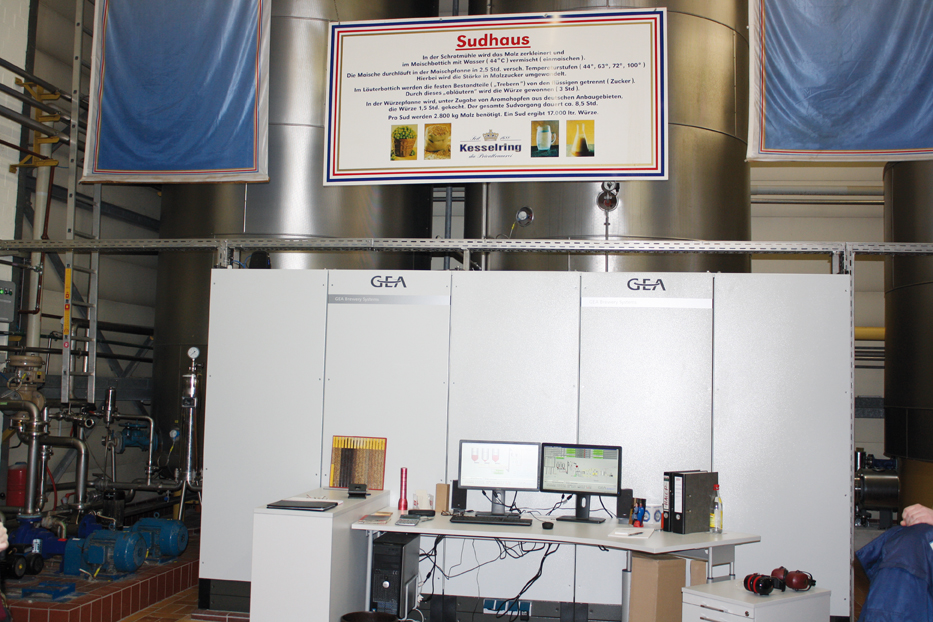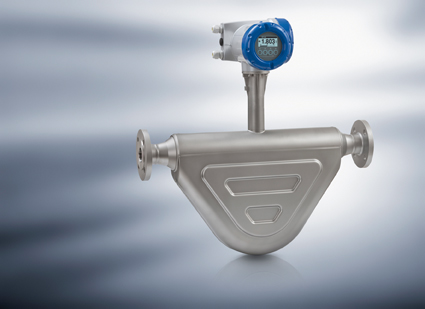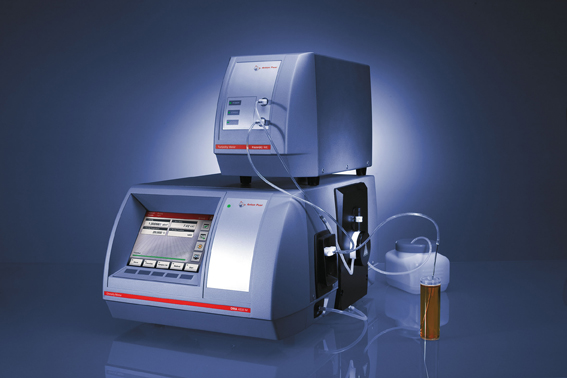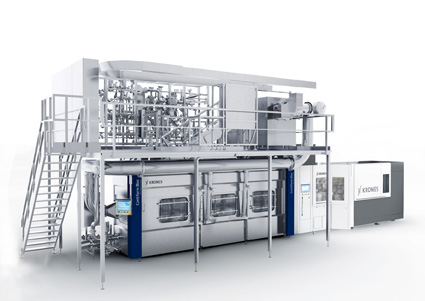The OPTIMASS 6400 is the world’s first Coriolis mass flowmeter to feature advanced Entrained Gas Management (EGM). In the past, gas entrainments in liquid media presented a huge challenge for mass flowmeters because the relative movement between gas and fluid dampens the amplitude of the measuring tube. This dampening leads to inconsistent sensor amplitudes, which interfere with the electronics’ capability to determine the actual resonant frequency. While other mass flowmeters simply "freeze" their last stable reading to cover this "loss of measurement", the OPTIMASS 6400 with EGM is able to follow and correct for the varying amplitudes. This is achieved for entrained gas up to 100% of volume and continues to present an actual measured reading, together with an indication or configurable alarm for the user. This indication can be very helpful to improve processes by identifying transient gas entrainments.
By now it’s old news that American craft brewers have become the world’s greatest innovators in beer-making. It is truly unbelievable what they manage to concoct in their brew houses these days – from the most sublime to the most extreme beers. In the United States, there seem to be no limits to the art of brewing any longer. On the retail shelves and on taps in bars and brewpubs, the vast variety of “made-in-America” beer creations run the gamut from wheat beer with mandarin oranges to Belgian Lambic with cranberries, Bock beer aged on cacao nibs, authentic medieval Gruitbier, “Double” India Pale Ale, “American-Style” Russian Imperial Stout, and velvety-smooth, high-alcohol, aperitif-like “Barley Wines” and “Wheat Wines.” Equally various are the raw materials used. Read more about one such specialty beer, a Wheat Wine brewed with floor-malted malt at Brookly Brewery, New York City, by Garrett Oliver, Horst Dornbusch and Thomas
Maltsters and brewers can currently check malt raw material for its potential to trigger gushing, using two analytical methods according to MEBAK [1]. The quantity of carbonated wort (malt extract) foamed over after bottle shaking is measured, this is used for determining the gushing potential of the malt. But investigations have shown that the gushing volume may vary, making it difficult to arrive at a precise figure. The Research Centre Weihenstephan for Brewing and Food Quality has therefore developed new analytical approaches to quantify gushing (not only on the basis of the quantity foamed over).
Stimulated by the strong market demand, the liquid food equipment and supplementary equipment industry in China have made great progress in technology innovations and showed a strong growth that gives a positive signal to the food industry. As the Chinese market demands higher standards in food safety, food quality and energy-saving in the manufacturing process, the liquid food equipment industry is welcoming a lot of market opportunities. A good example is the forthcoming China Brew an Beverage which takes place in Beijing from 19 - 23 September 2012.
An efficient yeast management is meantime an essential basis for high-quality and simultaneously for cost-effective beer production. In this framework, provision of vital yeast in sufficient quantities at the required point in time is a great challenge for efficient yeast management. Due to dynamic, non-linear and time-varying characteristics as well as upstream and downstream process time mismatches, it is very difficult to achieve this ideal situation in day-to-day operations. This requires a lot of planning in terms of process fine tuning. This contribution provides an insight into possibilities of automated processes of brewers’ yeast propagation based on a fuzzy-based expert system as an integral component of an efficient yeast management system.
In the parts already published (see box), following on from a market review and a look at historical developments, mashing processes and special features and possibilities of aroma formation associated with kvass were presented. Taking account of all findings, an overall concept for a modern kvass brewery has been developed. This is described here, in the last article of the series.
A solution for the measurement of turbidity in liquids, the HazeQC ME turbidity measuring module, is now provided by Anton Paar as part of a new modular measuring system. The approved ratio method with measurement at three angles (transmission 0°, scattered light at 25° and 90°) is used to prevent the influence of particle size on the turbidity value. The measurement is carried out at a wavelength of 650 nm ±30 nm (MEBAK- and EBC-compliant) in a cell with adjustable constant temperature. This turbidity measuring module expands Anton Paar’s product portfolio and adds a further important parameter for analyzing liquid samples - providing the same high quality expected of Anton Paar products.
The PET-Asept D Compact filler from Krones has been developed for mid-tier companies, which now have an option for handling even relatively small batches in aseptic mode while retaining viable cost-efficiency.
Kvass was originally made from rye bread soaked in water and left in a warm place to undergo gentle mixed fermentation. This method is still used in many private households in order to create the typical aroma of rye bread. As the production process is becoming increasingly industrialised, the limitations of standard mashing methods make themselves felt. Processes were optimised by modifying them and by using technical enzymes.
With drinking water level control, conventional procedures need up to 48 hours in order to get a result. This prevents rapid detection of contaminations or quick re-opening of closed pipe systems. With vermicon’s VIT gene probe technology analysis time can be reduced drastically: Gene probes penetrate into the bacteria and light them highly specifically. This allows for an exact identification and quantification of the microorganisms present. For efficient drinking water monitoring the detection system ScanVIT-E.coli/Coliforms was developed, which provides reliable results within only 12 hours. Absolute quantification is reached by scanning every single bacterium for possible classification as one of the targeted indicator bacteria.
Arabinoxylans, also known under the name of pentosan, belong to the group of dietary fibres and occur naturally in wheat and thus in malt and beer produced from same. The present study investigates the influence of malting and brewing on the content of water-






